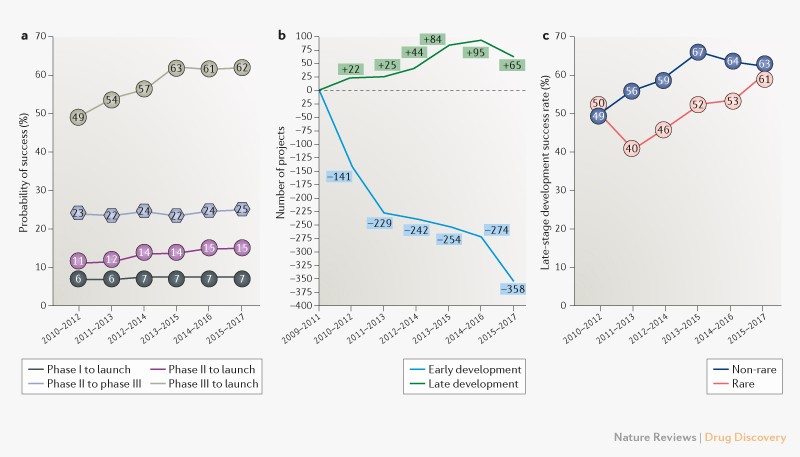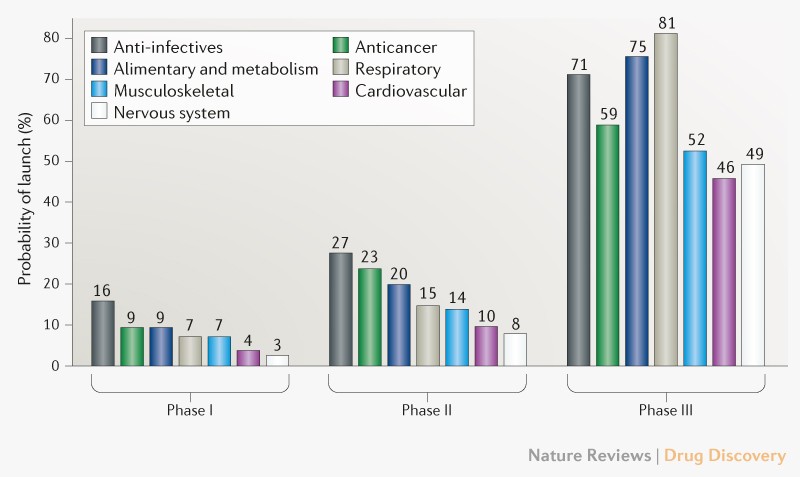The Public Shaping of Medical Research
Patient Associations, Health Movements and Biomedicine
04 d’agost 2019
03 d’agost 2019
02 d’agost 2019
01 d’agost 2019
31 de juliol 2019
Costing genome sequencing
The complete costs of genome sequencing: a microcosting study in cancer and rare diseases from a single center in the United Kingdom
The aspirational cost of sequencing a genome is $1000, but there is little evidence to support this estimate.How much does it cost really?
Genome sequencing costs £6841 per cancer case (comprising matched tumor and germline samples) and £7050 per rare disease case (three samples). The consumables used during sequencing are the most expensive component of testing (68–72% of the total cost).Check all the details in this article . Data related to 2017. Genome cost: £3420
30 de juliol 2019
25 de juliol 2019
Lab tests and the value of heterogeneity and stratified decision making
Establishing the Value of Diagnostic and Prognostic Tests in Health Technology Assessment.
This paper lays out a coherent framework for the assessment of diagnostic and prognostic tests for HTA using a linked-evidence, or decision modelling, approach. It is solidly grounded on the indirect mechanism of value accrual for these health technologies that can be summarised using three interlinked components: classification (using test results to define treatment groups), choice (in terms of treatment) and outcomes. Importantly, this paper proposes a series of innovative graphical displays
aiming to better inform decision making.
The literature on the value of heterogeneity and stratified decision making directly relates to this mechanism of value accrual with diagnostic and prognostic tests. Heterogeneity is defined as the variation in outcome of a population (variability) that can at least partly be explained by some attribute of interest. Heterogeneity is valuable insofar as it allows treatment decisions to be stratified across different subgroups so as to generate gains in (net)health; but, for heterogeneity to be identified, tests need to be applied that identify the subgroup an individual patient belongs to.A reference article on the topic, for the files.
Caravan Palace
20 de juliol 2019
Living drugs
The Promise and Price of Cellular Therapies
The op-ed of The New Yorker provides a clear understanding of the development of CAR-T therapies and the birth of a new class of drugs: the "living drugs". Their implications are huge, from manufacturing to pricing. A must read or listen.
The op-ed of The New Yorker provides a clear understanding of the development of CAR-T therapies and the birth of a new class of drugs: the "living drugs". Their implications are huge, from manufacturing to pricing. A must read or listen.
12 de juliol 2019
Drug development failure rate
Trends in clinical success rates and therapeutic focus
Clinical failure rates from phase I to drug launch remain at 93%.
If we look at nervous system it is the highest 97%, while the lowest failure is in anti-infectives 84%.
Clinical failure rates from phase I to drug launch remain at 93%.
If we look at nervous system it is the highest 97%, while the lowest failure is in anti-infectives 84%.
11 de juliol 2019
Promoting Healthy Behaviours
Behavioral Economics and Healthy Behaviors
Key Concepts and Current Research
A reference book on the topic that tries to put theory into practice. A work in progress.
PS. From now on, a new Telegram channel ECONSALUT
Key Concepts and Current Research
A reference book on the topic that tries to put theory into practice. A work in progress.
PS. From now on, a new Telegram channel ECONSALUT
06 de juliol 2019
05 de juliol 2019
Far away from blackbox medicine
Causal Inference
BIG DATA I REAL WORLD DATA EN L'ANÀLISI DE LA UTILIZACIÓ, SEGURETAT I EFECTIVITAT DE MEDICAMENTS, TECNOLOGIES I INTERVENCIONS SANITÀRIES
The main speech of a next workshop is about causal inference by Miguel Hernan. If you want to have a look at his book, you'll find it here.
Causal inference is one of the main issues that current machine learning methodologies often try to skip. Finally we do need to know the factors, the causes that produce a consequence, a disease. And for example with risk adjustment, it happens the same. The methodology has to provide a clear understanding of the factors for adjustment and weights. Otherwise it would be a blackbox.
BIG DATA I REAL WORLD DATA EN L'ANÀLISI DE LA UTILIZACIÓ, SEGURETAT I EFECTIVITAT DE MEDICAMENTS, TECNOLOGIES I INTERVENCIONS SANITÀRIES
The main speech of a next workshop is about causal inference by Miguel Hernan. If you want to have a look at his book, you'll find it here.
Causal inference is one of the main issues that current machine learning methodologies often try to skip. Finally we do need to know the factors, the causes that produce a consequence, a disease. And for example with risk adjustment, it happens the same. The methodology has to provide a clear understanding of the factors for adjustment and weights. Otherwise it would be a blackbox.
04 de juliol 2019
On sufficiency
What Is Enough? Sufficiency, Justice, and Health
The capability approach is an alternative to welfarist and extra-welfarist approaches to health economic evaluations. Unfortunately, it is not so easy to put into practice. The chapter 15 of a book sheds some light on the issue.
The capability approach is an alternative to welfarist and extra-welfarist approaches to health economic evaluations. Unfortunately, it is not so easy to put into practice. The chapter 15 of a book sheds some light on the issue.
The approach developed by us is based on an outcome called years of sufficient capability (YSC). Instead of focusing on the absolute gains of capability across a population (i.e., capability maximization), the YSC targets those who fall below a threshold level of sufficient capability, with the aim being to improve capability to sufficient levels for those who are “capability poorThese are the five capabilities of most importance:
Stability— “ability to feel settled and secure”However, at the end, the same question without easy answer:
Attachment— “an ability to have love, friendship, and support”
Autonomy— “an ability to be independent”
Achievement— “an ability to achieve and progress in life”
Enjoyment— “an ability to experience enjoyment and pleasure”
How to define a sufficient threshold of capability needs to be considered further. One approach would be to conduct qualitative research using participatory methods to assign a sufficient threshold for a given population.Unfortunately the proposal of participatory methods and the measurement of capabilities is illusory, at least in my view.
02 de juliol 2019
Episode groupers: a crucial tool for population health management
A practical guide to episode groupers for cost-of-illness analysis in health services research
Summary of analytic components in selected episode groupers.
| Product | Episode example | Sample conceptual focusa | Number of episodes | Clinical setting | Public episode definition | Linked risk-adjustment approach |
|---|---|---|---|---|---|---|
| 3M Patient-focused Episode Software | Not reported. | • Event-based episodes per patient • Cohort-based episodes among patients with a shared condition or characteristic | >500 | All | No | 3M Clinical Risk Groups |
| Cave Grouper | Urinary tract infection | • Physician relative efficiency and effectiveness scores • High-cost patient prediction | >500 | All | No | CCGroup MediScreen |
| CMS-BPCI | Urinary tract infection | Inpatient and post-acute care | ~50 | Inpatient, skilled nursing facility, inpatient rehabilitation facility, long-term care hospital or home health agency | Yes | No |
| McKinsey & Company | Perinatal | Principal Accountable Provider | >100 | All | Yes | Yesb |
| Optum Symmetry Episode Treatment Groups | Pregnancy, with delivery | • Patient total cost of care by condition categories • Provider profiling | >500 | All | Yes | Optum Symmetry Episode Risk Groups |
| OptumInsight Symmetry Procedure Episode Groups | Radical hysterectomy | • Medical and surgical procedure cost • Provider profiling | ~200 | All | No | Optum Symmetry Episode Risk Groups |
| Prometheus Analytics | Pregnancy | Potentially avoidable complications | ~100 | All | Yes | Prometheus Analytics risk adjustment |
| Medical Episode Grouper | Cardiac arrhythmias | • Population profiling • Provider profiling | >500 | All | No | Disease Staging and Diagnostic Cost Groups |
Information as of January 2019 in public documentation reviewed for this article, which comprised peer-reviewed articles and Internet searches for vendor product names; sources as cited in the References list. Readers are encouraged to check those and related sources for more details and updated information on the groupers briefly summarized here.
CMS-BPCI Centers for Medicaid and Medicare Services’ Bundled Payments for Care Improvement.
aAs highlighted in public documentation primarily from vendors; this is not an exhaustive list of conceptual orientations among profiled groupers.
bNot detailed in public documentation reviewed for this article in cited sources.
Subscriure's a:
Missatges (Atom)









